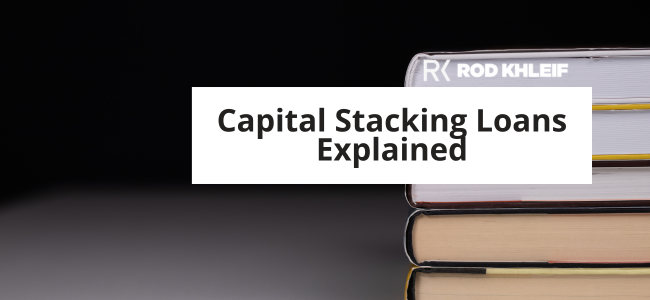The US real estate market is currently grappling with a downward trend, witnessing a dip in property prices and a significant drop in sales volumes in June.
What started as a slump in large, high-profile properties has now affected smaller markets and properties. The multifamily and office sectors are among the hardest hit, facing substantial quarterly and annual price declines in the second quarter of 2023, according to the CoStar Commercial Repeat Sale Indices.
In this article, we’ll delve into the implications of these declines and the significance of equal-weighted indices, offering insights into the challenges the national market faces.
Multifamily and Office Sectors Hit Hardest
The CoStar Commercial Repeat Sale Indices paint a stark picture for the multifamily and office sectors, which have experienced the most significant price declines in 2Q23. The value-weighted sub-index for major multifamily sales dropped by 2.4% during this period, and compared to the same quarter in the previous year, it plummeted by a staggering 14%. These figures indicate a significant decline in apartment prices, raising concerns among investors and industry experts.
Adding to the problematic scenario, data from equal-weighted indices show a slowdown in the US property market, specifically in smaller markets. The equal-weighted US Composite Index recorded a 1.1% year-over-year decline in June 2023, marking the first annual drop since February 2012. The office sector has not been spared either, with a substantial 7.1% drop in the 12 months ending in June.
These declines in property prices have far-reaching effects on the overall market, resulting in a 48% drop in overall repeat-sale transaction volume for the 12 months ending in June. The investment-grade segment suffered even more, with a significant 53% drop, while the general commercial segment, representing sales in smaller markets, experienced a 36.5% decline during the same period.
Trickle-Down Effects on the Market
The downward trend in US real estate valuation has significantly affected the overall market, with the multifamily and office sectors being hit the hardest. The CoStar Commercial Repeat Sale Indices have revealed major price declines in the second quarter of 2023, leading to concerns about the sustainability of the market’s recovery.
Repeat-Sale Transaction Volume Declines in Investment-Grade and General Commercial Segments The CoStar indices indicate a sharp decline in overall repeat-sale transaction volume for the 12 months ending in June 2023. This decline in transaction volume reflects a cautious approach from investors, impacting market liquidity and property prices.
As property prices dip, smaller private buyers hesitate to participate in the real estate market. With the uncertain economic conditions, many potential buyers are adopting a wait-and-see approach, further contributing to the slowdown in property transactions. This hesitancy among buyers extends even to the lower end of the market, highlighting the importance of understanding the market dynamics and buyer sentiment in the current climate.
Property Prices Chad Littell, the national director of US capital markets analytics for CoStar, has provided valuable insights into the national real estate market’s challenges. His analysis reveals that the house price estimate declines in the multifamily and office sectors extend even to smaller private buyers, creating a more widespread impact on the market. Littell’s observations emphasize the need for investors and stakeholders to carefully assess market conditions and make informed decisions amidst the changing landscape.
The Multifamily Sector’s Dramatic Swing
The multifamily sector, in particular, has experienced a dramatic swing in value, witnessing robust growth in the first quarter of 2022, followed by a concerning 14% decline in the second quarter of 2023. This sharp decline raises concerns about the future of the sector and the implications it may have for investors.
Data from equal-weighted indices reveal a significant slowdown in lower-priced property deals across the US. As the demand for affordable housing remains strong, the current market conditions present challenges and opportunities for multifamily investors. Understanding the changing dynamics of the market is crucial for investors seeking to capitalize on potential opportunities.
The decline in transaction volumes across the real estate market has raised questions about the pace of property price recovery. As the market becomes more cautious, investors need to consider the potential impact on their existing portfolios and future investments. Careful analysis and strategic decision-making are essential for navigating the uncertainties posed by declining transaction volumes.
Regional Disparities
The West and South regions, known for their vibrant real estate markets, have seen substantial declines in property valuation in recent times. Both residential and commercial properties in these areas have experienced significant price drops, impacting property owners, investors, and developers.
The West, which includes states like California, Oregon, Washington, and Nevada, has historically been a hotbed for real estate investment and growth. However, the decline in property prices has presented challenges for property owners looking to sell or refinance their assets. With the once-booming tech industry facing headwinds and the impact of the pandemic on tourism, the West region has witnessed a sharp correction in property values.
Similarly, the South region, comprising states like Texas, Florida, Georgia, and North Carolina, has also felt the effects of the market downturn. The South, known for its economic diversity and population growth, has attracted real estate investors seeking stable returns. However, the decline in property values has raised concerns for property owners and investors.
As property values continue to dip, potential buyers and investors may adopt a cautious approach, waiting for market stabilization before making significant investment decisions. This decrease in demand could further dampen the market, leading to prolonged price declines and a potential slowdown in construction and development activity.
The Road Ahead & Opportunities in Multifamily Real Estate
While the current market conditions may seem daunting for real estate investors and property owners, opportunities can arise from declining property values, particularly in the multifamily sector.
The multifamily sector, which experienced substantial growth in the past, is now witnessing a significant swing in property values. Investors with sufficient liquidity and risk appetite may find opportunities to acquire distressed or undervalued multifamily properties as prices decline.
The demand for rental housing remains strong, especially in urban centers and areas with strong job markets. Well-located multifamily properties with solid fundamentals could still attract renters and generate stable cash flow, even in a challenging market. Investors who identify properties with growth potential and implement value-add strategies may find themselves well-positioned for future market recovery.
Factors influencing investment decisions in the current market
Investing in real estate during a market downturn requires careful analysis and a long-term perspective. Several factors can influence investment decisions during these uncertain times, including:
- Risk Tolerance: Investors must assess their risk tolerance and financial capacity to weather potential market volatility and prolonged periods of low returns.
- Location: Location remains a critical factor in real estate investment. Properties in resilient markets with strong economic fundamentals are likely to fare better during a downturn.
- Property Type: The type of property being considered for investment can also influence decision-making. Multifamily properties with a diverse tenant base and a history of stable occupancy may be more attractive than single-family homes or commercial office spaces.
- Cash Flow and Debt Service: Investors should carefully analyze cash flow projections and ensure that debt service can be covered even in adverse market conditions.
Conclusion
The decline in US real estate values, particularly in the multifamily and office sectors, has raised concerns among property owners and investors. Regional disparities in property value estimate declines highlight the challenges the national real estate market faces. However, amid the market downturn, there are potential opportunities in the multifamily sector for savvy investors.
While caution is advised in the current market conditions, strategic investors with a long-term vision and a keen eye for opportunities may find themselves well-positioned to weather the storm and thrive in the evolving real estate landscape. As the market fluctuates, flexibility, adaptability, and informed decision-making will be the keys to success in the US real estate market.












